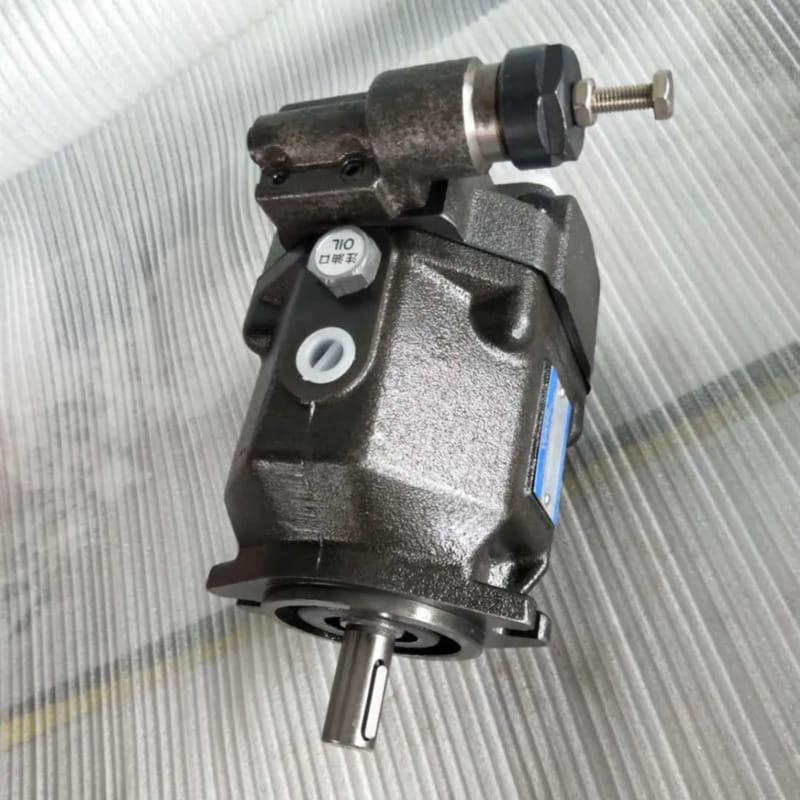Axial piston pumps are a specialized type of hydraulic pump that utilize a bank of pistons arranged in a circular design to deliver fluid flow. Variable displacement axial piston pumps can vary their displacement and output flow in response to demand. This makes them highly adaptable and efficient for a range of industrial hydraulic systems. In this blog, we’ll explore what makes axial piston variable pumps unique, their operating principles, advantages, and typical applications.

Introducing Axial Piston Pumps
Axial piston pumps utilize a series of pistons arranged in a circular array within a housing. As the pump shaft rotates, the pistons reciprocate to draw in and displace hydraulic fluid. This generates flow which exits through a pump port. The pistons ride against a swash plate or control cylinder at an angle. The angle controls piston stroke and displacement. Axial piston pumps are more complex in design than gear or vane pumps but offer higher pressures and the ability to vary displacement.
Variable Displacement Operation
While fixed displacement axial piston pumps provide a set flow output, variable displacement pumps can alter their flow in response to demand. This is achieved by changing the swash plate angle. At a right angle, minimal flow is delivered. As the swashplate tilts, piston stroke increases, raising displacement and flow. This allows the pump to efficiently match output to system demand and prevent wasted flow. Displacement can be adjusted manually or by a control system sensing pressure.
Benefits Of Axial Piston Variable Pumps
There are several key benefits variable displacement axial piston pumps offer:
- Adaptive Flow Control: Output varies based on demand for efficiency. Avoid wasted flow.
- High Pressure Generation: Axial design allows very high pressure outputs over 5000 PSI.
- Reversible Flow: Flow direction can be reversed by tilting swashplate the opposite way.
- Compact Size: Axial layout allows high displacements in smaller housings.
- Low Noise Operation: Precision machining and minimal pressure ripple.
- High Efficiencies: Up to 90% volumetric and mechanical efficiency.
- Long Service Life: Durable construction and minimal wear in operation.
Typical Applications Of Piston Variable Pumps
Axial piston variable pumps are well suited for applications that require adaptable, high pressure flow including:
- Industrial Machinery: Provides dynamic hydraulic control. Used on presses, injection molding, lifting equipment.
- Mobile Hydraulic Systems: Found on excavators, cranes, forklifts, lift platforms. Smooth operation.
- Agricultural Equipment: Used for implements and steering systems needing adaptable hydraulics.
- Metal Forming Presses: High pressure delivery for stamping, punching, shearing presses.
- Marine Applications: On propulsion and steering systems. Variable flow saves fuel.
- Aviation: Used as integrated flight control actuators needing compact, precise hydraulics.
Selection Factors About Axial Piston Variable Pumps
Key factors to weigh when selecting an axial piston variable pump include:
- Required Flow and Pressure: Size pump for peak system demands.
- Control Response: Evaluate pump control stability and response times.
- Operating Conditions: Consider pump duty cycle, temperatures, environment.
- System Size: Physical pump size and footprint limitations.
- Power Source Compatibility: Match pump to prime mover.
- Cost: Weigh initial price against performance benefits and life cycle value.
Proper application engineering is key to optimizing axial piston pump selection for your needs.
